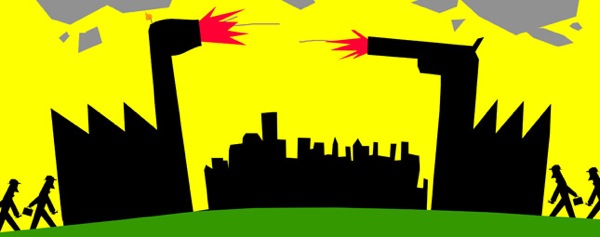Value is an expected outcome or the effective outcome of using an object. If the object is useful, the value should be higher, however, that is not the case in a capitalist economy. If many people possess the object and are willing to exchange it, the value is lower, no matter how useful the object is.
The object’s value is shaped, therefore, by the amount and rate of exchanges in the economy. Every time an exchange is consummated, the object’s value may change according to the law of supply and demand. When the demand is higher than the supply, people compete to produce the object faster and cheaper.

This the cornerstone of capitalist growth; as soon as people start competing, the value is lowered and the object becomes widely accessible. The drawback is that the object might not be useful anymore after going through this transformation into a commodity.
Competition for exchange value does not affect solely the production of goods. Any industry is subject to the commodification of objects. Even art works can be transformed into mass produced products. In knowledge work, the commodification implies the optimization of work processes, since human labor is the defining resource.
Knowledge work cannot be optimized without compromising the quality of produced objects, though. These objects are useful as much as they relate to what people already know, but this cannot be properly measured for exchange. People use to rely on abstract measures borrowed from other fields, which leads to generic applicable yet less useful objects.

Given that competition for exchange value has a short-term concern this is not a problem. As soon as the object is sold, the problem is over. There is no worry for the object because it will loose exchange value through use anyway. Even if the object turns to be useful, the exchange value is not affected because it depends on the market, not on the user.
This is also valid for internal exchanges in the value chain. The departments of a company can be said to exchange intermediary objects, which are later assembled into an object for external exchange. If the departments are competing internally for exchange value (measured not necessarily in money but maybe in reputation or influence) they display the same behavior: the object is no longer a concern after it is exchanged. The work may be of a low quality and difficult to build upon for the next department, but if it reaches the desired exchange value, it is considered fine.
I have run an experiment in my PhD about the competition for exchange value in design work. Design is often a multidisciplinary endeavor, based on the activities of different experts. I wanted to observe how people engaged in design face the competition for exchange value and how they overcome it. This is an important question since design is expected to deliver useful objects, not plain commodities.
The experiment is based on a board game called The Expansive Hospital. In this game, players have a choice either to compete or collaborate in building a hospital. If they compete too much, the hospital is bankrupt, whereas if they collaborate too much, someone takes an advantage. I played this game with design students as an experiment about competition.

The result of the experiment shows that even if students know they must collaborate to succeed as a group, they find very difficult to give up self-interests. Embodied in their roles as design experts, they are initially concerned about influencing others and securing their own profits. If they keep playing like that, the hospital suffers and they loose the game as a group.
Some students manage to overcome the initial drive through negotiation, but this is not always the case. The key for overcoming the hurdle is to find shared objects between players that can be used as a baseline for collaborative work. For example, the healthcare players must figure out that the patient is the core of their work.
The students that win in a winner’s group raises more money than the students that win in a loser’s group. The lesson is that the competition for exchange value must give rise to the collaboration for use value if design is to be sustainable in the long run. I’ll discuss this in more depth in the next post.